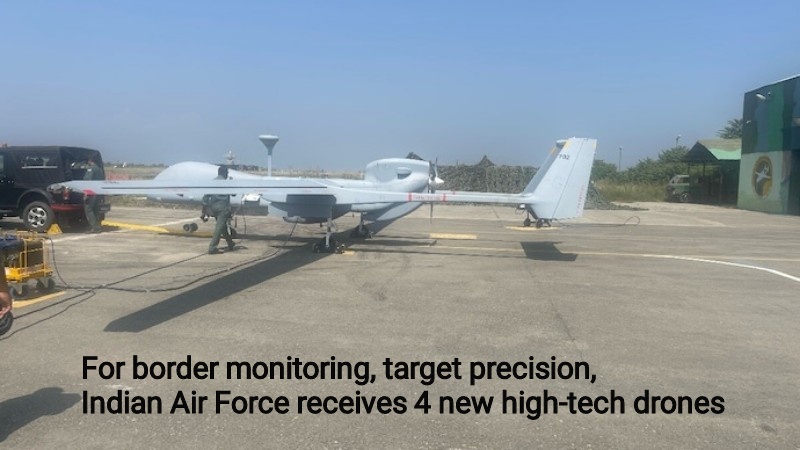
India has four cutting-edge Heron Mark 2 drones that can conduct surveillance along both frontiers and destroy hostile targets in a single sortie. The Indian Air Force has a major capacity boost thanks to these drones, which are stationed at a Forward Air Base in the northern region.
‘The four new Heron Mark 2 drones, which can be equipped with long range missiles and other weapons systems, have been deployed at a forward air base in the northern sector,’ Defence officials informed India Today.
These four Heron Mark 2 drones can be fitted with long-range missiles and other cutting-edge weaponry, according to defence officials, who spoke to India Today.
This deployment improves the Air Force’s crucial advantage of operating outside of visual range. These drones offer a sought-after long endurance capability, with the capacity to continue operating for approximately 36 hours at a time. This is made possible by their satellite connection capability.
The Heron mark 2 is a very capable drone, according to the drone squadron’s commanding officer, Wing Commander Pankaj Rana. Longer endurance and ‘beyond line of sight’ capacity are both possible with it. With this, the entire nation can be watched over from one location.
He stressed how well the drone fits into the Indian Air Force’s intelligence, surveillance, and reconnaissance architecture.
Pankaj Rana described the drone’s main strength as its ability to provide continuous target surveillance. The drone can now operate in any weather or terrain thanks to its updated avionics and engines, which have greatly raised its operational ceiling.
Rana emphasised the key advantages of the newest unmanned aircraft of the Indian Air Force, saying, ‘Flying from here, the drone can cover both adversaries in the same sortie itself.’
Defence authorities claimed that work is being done to weaponize the drones and that they are capable of being armed. The original equipment manufacturers can equip the drones with air-to-ground missiles, air-to-ground anti-tank weaponry, and explosives, among other sorts of weapons.
The Heron Mark 2 drone’s pilot, Squadron Leader Arpit Tandon, emphasised the new model’s many benefits over its early 2000s predecessors.
‘The payloads and the onboard avionics of the Heron Mark 2 can operate at sub zero temperatures and in any weather condition. This is helping the Indian Air Force achieve footprints over any type of terrain,’ he said.
To address the needs of the armed forces, the Indian Air Force is also working hard on Project Cheetah, which aims to update about 70 Heron drones with satellite communication links and missile systems. Additionally, 31 high-altitude, long-endurance Predator drones are being sent to the Indian armed forces, which are assisting the Navy in covering large areas of the Indian Ocean.

Post Your Comments